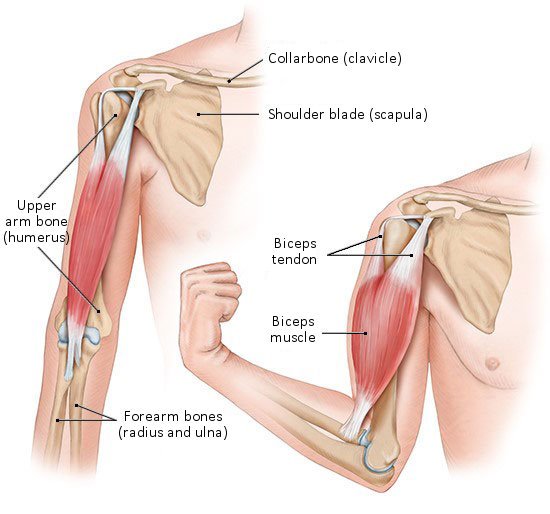What are tendons made of, and what do they do?
Tendons are made out of connective tissue that has a lot of strong collagen fibers in it. This means that they are very resistant to tearing, but not very stretchy. Compared to muscles, they have fewer blood vessels in them too. Because of this, they are prone to injury when overstrained and take a lot longer to heal than other types of tissue in the body.
The bones are connected to the muscles, which cause the bones to move when the muscles tighten and relax. In some parts of the body, the muscle is directly attached to the bone. But this isn’t always possible because there often isn’t enough room on the bone, or the bone and muscle are too far apart. Tendons then act as space-saving “connectors” that transfer the movement of the muscle to the bone. One end of the tendon is attached to a muscle. The other end is firmly attached to the membrane covering the bone (the periosteum) or to the bone itself.
What do tendon sheaths do?
Some tendons run through narrow tunnels made of bones and ligaments, and some are stretched over bumpy parts of bones, for instance in the wrist and foot. In these places, the tendons are often protected by layers of connective tissue known as tendon sheaths. Tendon sheaths are filled with a lubricating fluid, allowing the tendons to move smoothly and freely through them.
Lippert H. Lehrbuch Anatomie. München: Urban und Fischer; 2003.
Niethard FU, Pfeil J, Biberthaler P. Duale Reihe Orthopädie und Unfallchirurgie. Stuttgart: Thieme; 2014.
Pschyrembel. Klinisches Wörterbuch. Berlin: De Gruyter; 2017.
IQWiG health information is written with the aim of helping people understand the advantages and disadvantages of the main treatment options and health care services.
Because IQWiG is a German institute, some of the information provided here is specific to the German health care system. The suitability of any of the described options in an individual case can be determined by talking to a doctor. informedhealth.org can provide support for talks with doctors and other medical professionals, but cannot replace them. We do not offer individual consultations.
Our information is based on the results of good-quality studies. It is written by a team of health care professionals, scientists and editors, and reviewed by external experts. You can find a detailed description of how our health information is produced and updated in our methods.
Stay informed
Subscribe to our newsletter or newsfeed. You can find our growing collection of films on YouTube.

